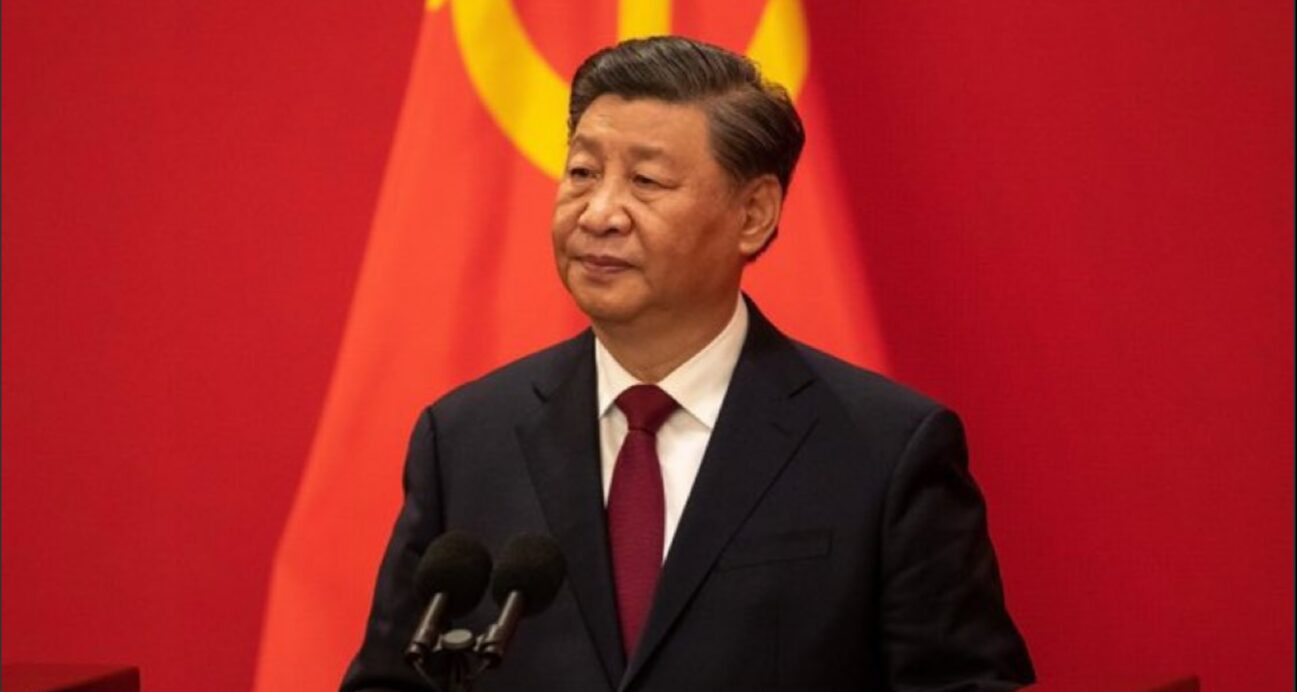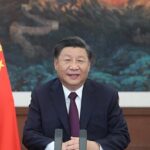China’s trade surplus reaches a record of $992 Billion in 2024, rising by 10.7%
China’s Trade Surplus Reaches a Record $992 Billion in 2024: What This Means for the Global Economy
In 2024, China has achieved a remarkable economic milestone, as its trade surplus soared to an all-time high of $992 billion, marking a significant 10.7% increase compared to the previous year. This record-breaking surplus not only reflects China’s continued dominance in global trade but also has far-reaching implications for both the Chinese economy and the global marketplace.
The trade surplus, which is the difference between the value of China’s exports and imports, underscores the country’s continued economic resilience and its pivotal role as the world’s manufacturing powerhouse. With a significant boost in exports driven by both consumer demand and the ongoing shifts in global supply chains, China has capitalized on its manufacturing strength and its position as a major trade partner for many countries.
In this article, we will explore the key factors driving China’s record trade surplus, its economic implications, and what this means for the global economy, including the ongoing trade dynamics between China, the United States, and other key partners.
Understanding China’s Record Trade Surplus
A trade surplus occurs when the value of a country’s exports exceeds the value of its imports. In China’s case, its exports in 2024 far outweighed its imports, contributing to a surplus of nearly $1 trillion. The 10.7% increase in the surplus is particularly noteworthy, as it indicates China’s ability to maintain robust growth in the face of global economic uncertainties.
The Chinese government has long promoted export-driven growth, and it has been successful in making China the world’s leading exporter of goods, particularly in categories like electronics, machinery, textiles, and consumer goods. This trade surplus reflects both the country’s strong manufacturing base and the global demand for its products.
Key Factors Driving China’s Trade Surplus in 2024
- Continued Demand for Chinese Manufactured Goods: One of the primary drivers of China’s record trade surplus in 2024 is the sustained demand for Chinese products across global markets. Despite global economic challenges, demand for Chinese electronics, machinery, textiles, and consumer goods has remained strong. China’s manufacturing sector, which has been fine-tuned over decades to meet the demands of the global market, continues to be a key strength.
- Shifts in Global Supply Chains: The COVID-19 pandemic and subsequent disruptions to global supply chains have had lasting effects on international trade patterns. As countries seek to reconfigure their supply chains for greater resilience, many have turned to China as a reliable supplier of essential goods, particularly electronics, medical supplies, and consumer goods. This shift has provided China with an advantage as the world continues to recover from the pandemic’s economic effects.
- Currency Exchange and Competitive Pricing: The value of the Chinese yuan has also played a role in boosting exports. In 2024, the yuan remained relatively competitive compared to other major currencies, allowing Chinese goods to be more affordable in international markets. This has helped drive up export volumes, further contributing to the trade surplus.
- Growth in E-Commerce and Online Retail: China has also seen a significant boom in e-commerce, both domestically and internationally. Online retail platforms like Alibaba and JD.com have continued to expand, giving Chinese exporters direct access to global markets and enabling them to tap into new demand, particularly from consumers in developed countries like the U.S., Europe, and emerging markets.
- Global Demand for Green Energy Products: Another area of growth for Chinese exports is in the green energy sector. As countries ramp up their efforts to meet climate goals, demand for renewable energy technologies, such as solar panels, electric vehicles, and energy storage solutions, has risen sharply. China, a global leader in the production of these technologies, has benefited from this growing market, further boosting its export figures.
- China’s Strength in Technology and Electronics: China’s dominance in the technology and electronics sectors continues to play a significant role in its trade surplus. The country is the world’s largest exporter of smartphones, computers, and consumer electronics, and demand for these products remains high. In 2024, China also benefited from the global rollout of 5G technology and the increasing demand for high-tech equipment in sectors like telecommunications, healthcare, and manufacturing.
The Economic Implications of China’s Record Trade Surplus
- Positive Impact on China’s Economic Growth: The record trade surplus is a strong indicator of China’s continued economic growth and resilience. As the world’s second-largest economy, China’s robust exports help to boost its GDP and maintain economic momentum, even in the face of challenges such as fluctuating global demand and trade tensions with other major economies.
- Strengthening China’s Foreign Exchange Reserves: With such a large trade surplus, China continues to accumulate foreign exchange reserves. This not only helps the country maintain financial stability but also strengthens its ability to manage exchange rates and mitigate external economic shocks. The increase in foreign reserves also enhances China’s position as a key player in global financial markets.
- Potential Impact on Inflation and Domestic Consumption: While the trade surplus has been positive for China’s overall economy, it has also led to concerns about inflationary pressures in some sectors. The continued focus on exports could divert attention from domestic consumption, which has been a key area for economic reform in China. Policymakers may need to find ways to balance export growth with the need to stimulate domestic demand and ensure sustainable economic development.
- Global Supply Chain Shifts: As China continues to dominate global trade, countries that rely heavily on Chinese imports may face challenges in managing their own trade imbalances. For example, the United States, which has long run a trade deficit with China, could see its deficit widen further as demand for Chinese goods increases. Countries like the U.S. and members of the European Union have also been seeking to reduce their dependence on Chinese manufacturing, though such efforts may take years to fully materialize.
- Geopolitical Tensions and Trade Policy: China’s growing trade surplus could exacerbate geopolitical tensions, particularly with the United States. The U.S. has long been critical of China’s trade practices, accusing the country of unfair trade policies, intellectual property theft, and currency manipulation. The Biden administration, following the trade war policies of the Trump era, may seek to address the trade imbalance through tariffs, trade agreements, or other measures. This ongoing trade friction could lead to further global economic uncertainties, especially if trade wars escalate.
- The Future of Global Trade Relationships: The increasing trade surplus underscores China’s central role in global trade networks. As the world’s largest exporter, China continues to shape trade policies, global supply chains, and economic trends. However, its dominance could spark calls for reforms in international trade systems and institutions, as other countries may seek to level the playing field and reduce their reliance on Chinese goods.
China’s Trade Surplus in the Context of Global Trade
China’s record trade surplus in 2024 comes at a time when global trade is experiencing shifting dynamics. As countries recover from the COVID-19 pandemic and adapt to new trade realities, China’s position as a global trade leader has only strengthened. With its advanced manufacturing base, global e-commerce networks, and strong technological capabilities, China has been able to maintain a dominant position in world markets.
The trade surplus also highlights China’s growing influence in emerging sectors such as green energy and high-tech manufacturing. As the world moves toward more sustainable practices, China’s dominance in these industries gives it a strategic advantage in shaping the future of global trade.
At the same time, the record surplus also underscores the complex and sometimes contentious nature of global trade. As China continues to benefit from its trade relationships, questions about trade imbalances, currency policies, and the role of global trade organizations remain at the forefront of international economic discussions.
In Conclusion
China’s trade surplus reaching a record $992 billion in 2024 is a significant milestone that showcases the country’s continued economic strength and its pivotal role in global trade. The 10.7% increase in the surplus reflects sustained global demand for Chinese goods, particularly in technology, manufacturing, and green energy sectors. This development has important economic implications, both for China and the global marketplace.
While the surplus is a positive indicator of China’s economic resilience, it also raises important questions about trade imbalances, global supply chains, and geopolitical tensions. As the world’s largest exporter, China will continue to shape the future of international trade, but the challenges and complexities that come with its growing economic influence will require careful management in the years to come. The global community will need to navigate these trade dynamics to ensure a stable and fair global trading system.

















Post Comment